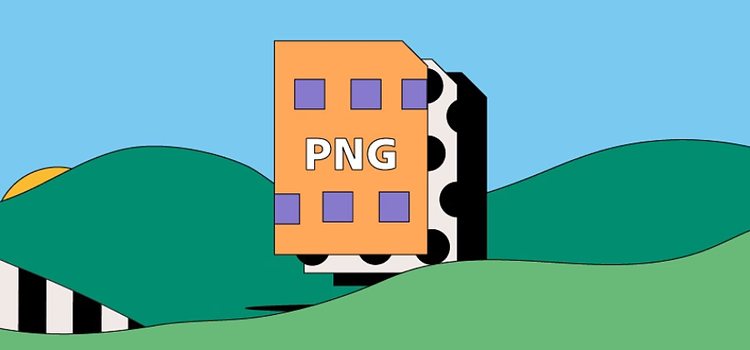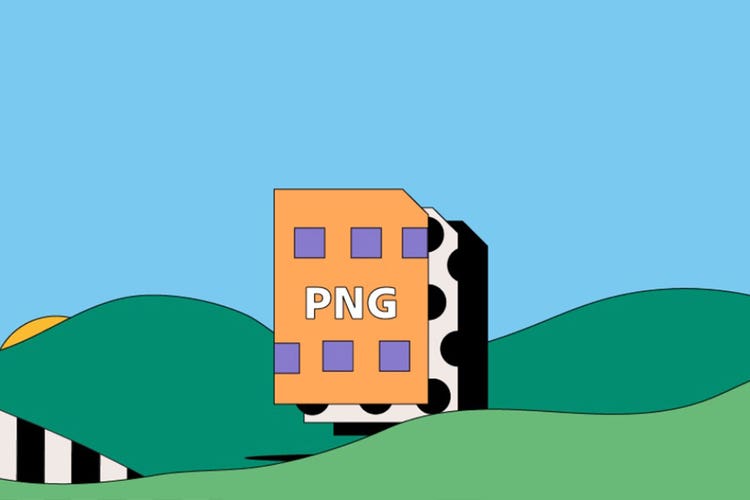PHOTOGRAPHY
PNG files.
The PNG file format is widely used on websites to display high-quality digital images. Created to exceed the performance of GIF files, PNGs offer not just lossless compression, but also a much broader and brighter color palette. Read on to discover the pros and cons of PNGs, their main uses, and how to create a PNG image.

https://main--cc--adobecom.hlx.page/cc-shared/fragments/seo-articles/get-started-notification-blade
What is a PNG file?
PNG is short for Portable Network Graphic, a type of raster image file. It’s particularly popular file type with web designers because it can handle graphics with transparent or semi-transparent backgrounds. The file format isn’t patented, so you can open a PNG using any image editing software without the need for licensing.
PNG files, which use the .png extension, can handle 16 million colors — which definitely sets them apart from most file types.
History of the PNG file.
The PNG image format launched in 1995. IT expert Oliver Fromme came up with the name PING, later shortened to PNG.
PNGs are the next evolution of the GIF format, which had already been around for eight years when PNGs first launched. GIFs had several drawbacks, like requiring a patent license and a limited range of just 256 colors, which didn’t keep pace with ever-improving computer screen resolution. To avoid these issues, PNG files were made patent-free and included a significantly larger color palette. PNGs, as opposed to GIFs, are a single-image format — they don’t support animation.
What are PNG files used for?
The Portable Network Graphic is a versatile image file format. Here are just a few ways you can use PNGs:
Logos with transparent backgrounds.
Designers often use PNG files for logos. That’s because the format supports transparent backgrounds, which means designers can layer logo files on different backgrounds in a way that looks natural.
Online charts and graphics.
The PNG format uses lossless compression, which means that this file type retains of all its original data when compressed. This makes PNGs great for detailed graphics and charts on websites because none of the vital information gets lost.
Pros and cons of PNG files.
With PNGs, there are many advantages — but also some disadvantages — to consider before using the file format:
Advantages of PNG files.
- By handling millions of color options rather than hundreds, PNG files can store much more detailed images than GIFs.
- PNG is open format, so you can view and edit these files in a huge range of programs without a license because there’s no patent.
- A PNG image won’t lose any of its data when it’s compressed, which makes it much easier to store and transfer. This is a big advantage over lossy options like JPEG files, where some information disappears in the compression process.
Disadvantages of PNG files.
- By retaining all its original data when compressed, a PNG file will generally be a lot larger in size than a GIF or JPEG. This means it’ll take up more room on your computer’s hard drive.
- From the outset, PNGs were designed with the web in mind. Because of this, they don’t support CMYK color modes, so transferring them to print can prove difficult.
- Although compressed PNGs contain high-quality, detailed image data, their larger file size means slower page loading times and responsiveness.
How to open a PNG file.
Nearly all built-in image editing programs can open PNG files. Whether you use a Mac or Windows computer, simply search for the file name and double-click on it. You can then c hoose the program you want to use from the list of options your computer gives you.
All the major web browsers can also open PNGs, including Chrome, Edge and Safari. To view it, just drag and drop a PNG file from your desktop to your browser.
How to create and edit a PNG file.
Follow these three easy steps to create a PNG using Adobe Photoshop:
- Open an existing image file in Photoshop and click Save As.
- Select PNG from the Format menu in the box that appears.
- Save your new PNG file to a location of your choice.
To edit the transparency of your image:
- Open your PNG file in Photoshop and click Window, then Layers.
- In the Layers panel, click on the Background layer followed by OK.
- Select the Opacity menu within the Layers panel. You can then choose a percentage below 100% to alter your image’s transparency.
PNG files: frequently asked questions
Does the PNG format ever support animation?
What are the differences between PNG and JPEG files?
The simple answer is that PNGs offer lossless compression and JPEG files don’t. This means, unlike JPEGs, PNGs don’t lose any of their image data when they’re compressed. On the flipside, lossless compression tends to make PNGs much bigger files than JPEGs, so they require more storage space.
Find out more about the differences between PNGs and JPEGs.
